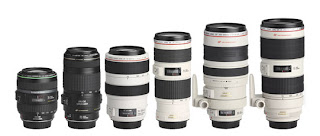Here are tips before you buy a second-hand lens:
- Determine the required camera facility, type and brand of lenses that fit within the desired range of the available budget. To get an idea of price ranges, contact some camera stores over the phone.
- Go to store lens, try a new lens, watch AF ring and zoom ring. some lenses rotate AF ring as it searches for its focus, this will affect the use of circular polarize filter (CPL). As you understand the conditions of the new lens, you will be expected to get a reference of comparison to the used lens.
- Make sure you try first lens you want to buy. Make sure the autofocus-motor works smoothly (if the lens autofocus)
- Check also part of the lens, do not get any scratches, dewy, or fungi.
- Note the bolt on the outside and inside of the lens, if the bolt is not good, it means that the lens has been opened before.
- For conditions inside the lens, bring a small flashlight to see it, either from the front or from the rear, notice the dust on the inside of the lens, if it can be tolerated or not.
- Try to put the lens on the camera for checking the DOF (depth of field), use a sheet of newspaper, put the paper on a flat surface, take the photo paper at an angle of about 40 degrees. focus on one word, e.g. the word "lens-kit", see the results, if the word "lens-kit" clearer than the surrounding words, means the lens is still in good condition, but these pictures could show the wrong focus sharp if not the word "lens-kit" is. This checking is very useful especially for a lens with a large aperture specifications, such as f/2.8 aperture or below, and make sure all lenses functions running properly.
- Check that the lens aperture setting close fit in the shooting. Go to the back of the camera, set in Bulb mode, and press the shutter. Perform this test on the entire range of the lens aperture.
- Avoid lens with a zoom or focusing mechanism falters, too hard, or too loose.
- Inspect the filter thread on the front of the lens, and make sure there is no damage or jam. When in doubt, do a test by installing a filter on the lens.
- Avoid buying lenses online from an individual seller you do not know very well, because it's been a lot of fraud. Also avoid to transfer a down payment or pay in full with the promise of the lens will be shipped the same day, except to an online thrift shop that you know well.
- Also make sure you receive a receipt from the seller for warranty claims, if any, and also to make sure that the lens you buy is not illegal.


















